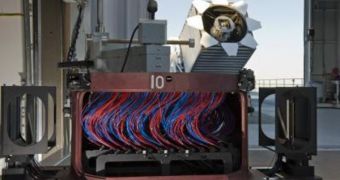During the night of September 14-15, the Baryon Oscillation Spectroscopic Survey (BOSS) experienced its first light, in an event that marked the beginning of a new type of quest for dark matter. The new method relies on the now-emerging technology known as baryon acoustic oscillation (BAO), which may have the ability to clear up questions related to the expansion history of our Universe. BOSS is a part of the Sloan Digital Sky Survey III (SDSS-III), ScienceDaily reports.
“Baryon oscillation is a fast-maturing method for measuring dark energy in a way that's complementary to the proven techniques of supernova cosmology. The data from BOSS will be some of the best ever obtained on the large-scale structure of the Universe,” David Schlegel, who is the principal investigator for the BOSS project, explains. The expert, along with colleague Martin White, survey scientist, and Natalie Roe, instrument scientist, is based at the US Department of Energy's (DOE) Lawrence Berkeley National Laboratory (Berkeley Lab). University of Arizona Professor Daniel Eisenstein is the director of the SDSS-III.
The first light for BOSS was achieved across the entire focal plane of the Sloan Foundation 2.5-meter telescope, at the Apache Point Observatory, in New Mexico. The resulting image featured more than 800 galaxies and about 200 quasars, and was made after several nights of delay, on account of the clouded skies, and overall unfavorable meteorological conditions. All of the observed features were located in the constellation Aquarius, home of the famous Helix Nebula.
Over the next five years, BOSS will measure variations in the density of hydrogen gas between some 1.4 million luminous galaxies, with redshifts up to 0.7. This is equivalent to looking back in time to when the Universe was only half of its current age. “BOSS will survey the immense volume required to obtain percent-level measurements of the BAO scale and transform the BAO technique into a precision cosmological probe,” White explains.
“The high precision, enormous dynamic range, and wide redshift span of the BOSS clustering measurements translate into a revolutionary data set, which will provide rich insights into the origin of cosmic structure and the contents of the Universe,” he adds.

 14 DAY TRIAL //
14 DAY TRIAL //